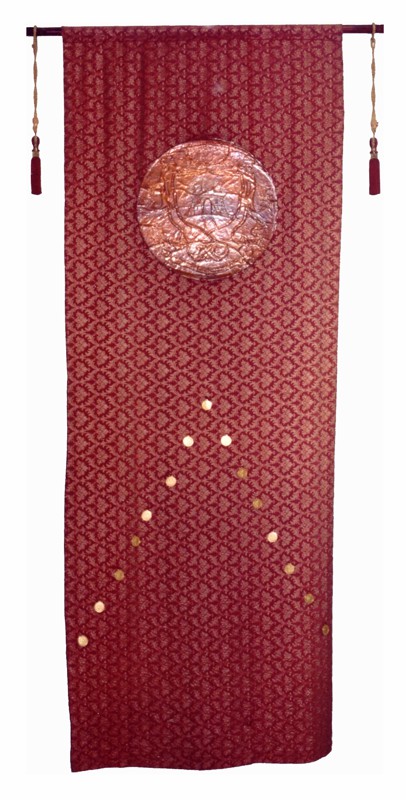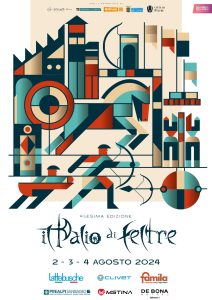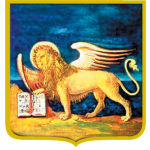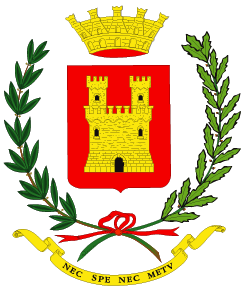PALIO, from the Latin palium, is a drape, i.e. a piece of precious and ornate fabric, which was already given as a prize to the winner of a race in Roman times.
The Palio of Feltre was sewn in 1979 by the seamstress Luigia Zaetta, taking on this sober shape with a long vertical band, desired for a comfortable and harmonious affixing of both the brass worked disc and the fifteen gold ducats.
The much coveted and disputed prize
by the four quarters of the Palio di Feltre is the
“Palio’, that drape that gives its name to the
historical August event.
Its shape is vertically rectangular, measuring 2.40 m in height and 92 cm in width. A wooden rod runs along its upper edge, from the ends of which two cords branch out to hook onto the long supporting pole.
It was conceived and designed by the Feltrina artist Marula Tarricone, the same artist who carried out precise and careful historical research and then designed the first costumes of the participants, the district signs and flags.
The choice of fabric for the Palio was oriented towards ‘closed pattern brocade‘, classic in colour and workmanship of the 15th century, a fabric that was solid in weave and very consistent.
On the upper part of the Palio, in the centre, there is a valuable copper foil roundel on a wooden support with a diameter of 45.5 cm; the handmade embossing is the work of the Feltre artist Fulvia Celli, a painter and ceramist of international fame.
It reproduces the coat of arms of the City of Feltre, taken from the ancient text of the ‘Istoria della Città di Feltre‘ by Girolamo Bertondelli (1653).
The civic emblem bears on a cartouche the motto of the City of Feltre in Latin: “QUAE SIMILIS HUIC OPPUGNATA FORTIOR DEPOPULATA PLENIOR ET LAURIS CORONATA” (Which city can be similar to Feltre? Conquered it has become stronger, destroyed resources even more populous and is crowned with laurel).
In tiers, the ‘fifteen gold ducats up for grabs‘ are laid out as the historical event dictates.
For the minting of the ducats, the geom. Romano Nascimbene of Feltre, a well-known numismatic expert and consultant, was commissioned at the time. He elaborated the minting (only for the front side) that reflects in the central roundel the original classical 15th-century depiction of the Venetian duchy: ‘St. Mark giving the ducal investiture to the Doge‘.
The reproduction of the ducat measures 32 mm in diameter and 2 mm in thickness.
The first Palii from 1980 to 1985 were held without the horse race, because there was not yet a suitable site for the horse race: in 1985 the green area in Prà del Moro was equipped and from the following year 1986 the horse race was run.




